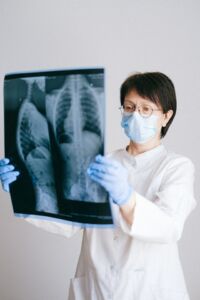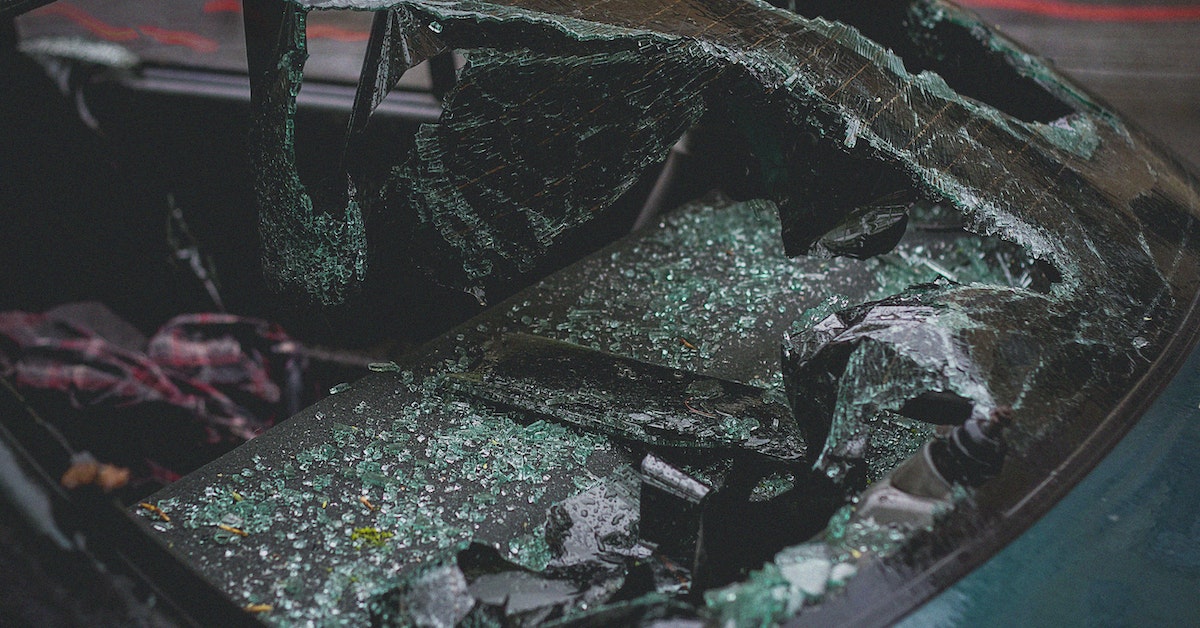What you do and say immediately following a car accident can make a massive difference to your health and claim. Unfortunately, accidents activate our fight-or-flight response, making it difficult to think clearly. Having a plan before an accident occurs can keep you from making mistakes that put your health or wallet at risk. Here are the four steps you should take after an accident, in order.

1. Evaluate Immediate Needs and Communicate with First-Responders
The first thing to do after an accident is to ensure that you and anyone else involved do not need immediate medical attention. If possible, move your vehicle out of traffic. If you can’t move your vehicle, only exit your car if there isn’t oncoming traffic. On a freeway or other busy street, it’s safer to remain in your vehicle until help arrives.
After you’ve moved your vehicle out of immediate danger, call 911 to report any serious injuries. In a minor accident with no injuries, call 911 to report the accident. Dispatch will send a highway trooper or officer to take a statement from you and the other driver. Having the details of the accident recorded by a third party may be important for your case later.
Since anything written down might be used against you by the insurance company, what you say and how you say it is crucial. Report the facts as you know them, and if you feel too shaken to answer questions, tell the officer that you can’t fill out the report right now. Most states allow an accident report to be filed up to 24 hours after the accident. Beware of questions from the police or other driver about your health. Even the seemingly innocuous “are you Ok?” should be answered with “only my doctor can determine if I’m injured.” You can assure the officer and other driver that you don’t need immediate medical care but never say, “I’m fine” or “I’m not hurt.”
That might sound shady, but many injuries can take days to manifest. All that adrenaline can numb pain and mask muscle strains or disc trauma. You don’t want to realize your neck hurts a week after you’ve reported that you weren’t injured.
To protect yourself further, you can take pictures of any visible personal injuries and the damage to both vehicles.

2. See A Healthcare Provider
Within 48 hours of the accident, see a medical provider to determine the extent of your injuries. Injuries like whiplash, herniated discs, muscle strains, and minor concussions may not be evident to you until several days later. It’s also possible to have a serious injury and not know it. Getting evaluated quickly could save your life. Even with non-life-threatening injuries, prompt treatment leads to better outcomes.
Prompt medical evaluation is also essential to your insurance claim. Your insurance company will require your provider to fill out paperwork, possibly more than once. Getting a provider on this quickly will expedite your claim. Insurance companies are also more likely to cover personal injury claims brought to their attention soon after an accident. Since the machinery of insurance claims moves slowly, it’s best not to wait until your claim is resolved to seek treatment. Doing this may cause serious health consequences as well as underpayment, if the full extent of your medical needs was not known.
Even minor accidents can lead to painful injuries. Whiplash and disc injuries can cause chronic pain if they aren’t addressed. Your provider will need to take x-rays and give you an exam to determine what treatments you need. Personal injury treatment plans usually include a combination of spinal adjustment, therapeutic exercises, and trigger point therapies. The goal of treatment is to accelerate healing and prevent chronic pain.

3. Contact Your Insurance Company
You will probably get a phone call from the other driver’s insurance soon after the accident. Remember that your insurance company works for you, and the other driver’s insurance company doesn’t. It’s best only to contact your own company and let them deal with the other driver’s insurance. Give your insurance agent all the information you have, including any forms or notes from your medical provider, pictures you took, and video from your dash cam, if applicable.
A minor accident with two adequately insured drivers will likely resolve, with no need for legal counsel. If the stakes are higher than a dented bumper or the other driver was uninsured or under-insured, consider hiring a personal injury attorney. You don’t have to pay the attorney until they win your case. You’ll then pay them a certain percentage of your settlement. Ask around for recommendations and hire an attorney with a solid record of winning cases similar to yours.

4. Follow Through With Your Treatment Plan
Dealing with the financial and legal aftermath of an accident is a hassle, and it’s easy to get burned out and stop going to treatment. Most treatment plans require several sessions. You may need to continue treatments for 4-6 weeks or longer, depending on the extent of your injuries. While this may seem daunting, the results are well worth it. Patients with back and neck injuries who complete their treatment plan are much less likely to suffer prolonged discomfort. By putting in the time now, you can ensure that you’ll feel your best after the hassle is over.
When choosing a provider, make sure they work with your insurance company and that they don’t require an upfront payment. This will give you some breathing room while you wait for the insurance payments to come in. Ideally, you should be able to receive prompt and continuing treatment for your injuries without worrying about the cost.
Personal Injury Treatment in Murfreesboro
At Stanlick Chiropractic, we evaluate and treat personal injuries related to car accidents. We will create a personal injury treatment plan to expedite healing and relieve pain. Our insurance billing experts will contact your insurance company so you can focus on healing. Schedule a no-fee consultation today to get started with your personal injury treatment.

